The European Space Agency (ESA) sent the Jupiter Icy Moons Explorer (JUICE) research vehicle into space on April 14. Its main task is a detailed study of three of the four largest moons of Jupiter. The most interesting of them is Europa, for it has an ocean of liquid water under the ice.
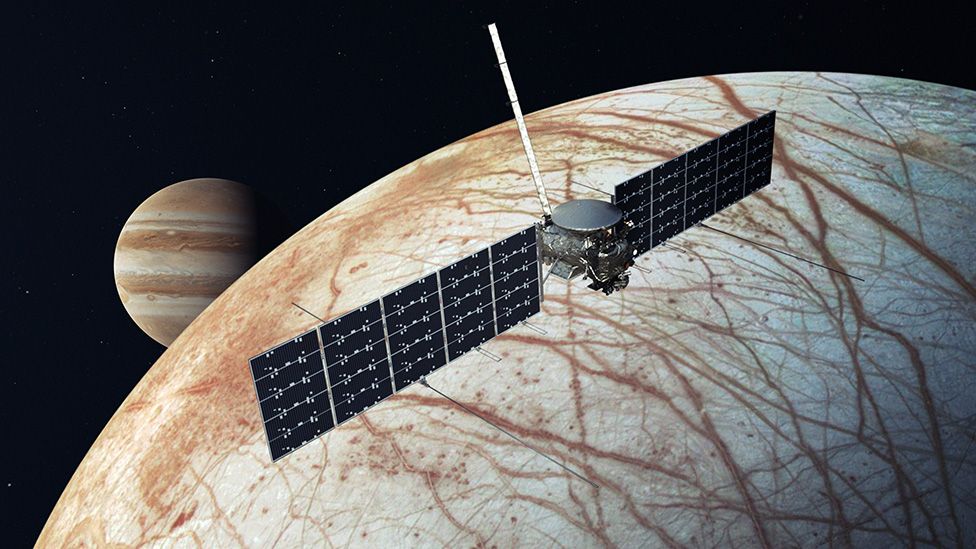
The mission of JUICE
The JUICE robotic probe was launched on April 14 from the Kourou Spaceport in French Guiana. It was developed by ESA specialists specifically for the study of Jupiter’s three large moons, which look like ice balls: Europa, Ganymede and Callisto. In addition, it should remotely study the fourth satellite — Io, the closest of the “big four” to the giant planet.
But before this happens, the probe will have to cover a long way. For six years, it will fly through the inner part of the solar system and make four gravitational maneuvers in the vicinity of Earth and Venus. Only in 2031 will it reach the system of the gas giant and begin to explore its satellites.
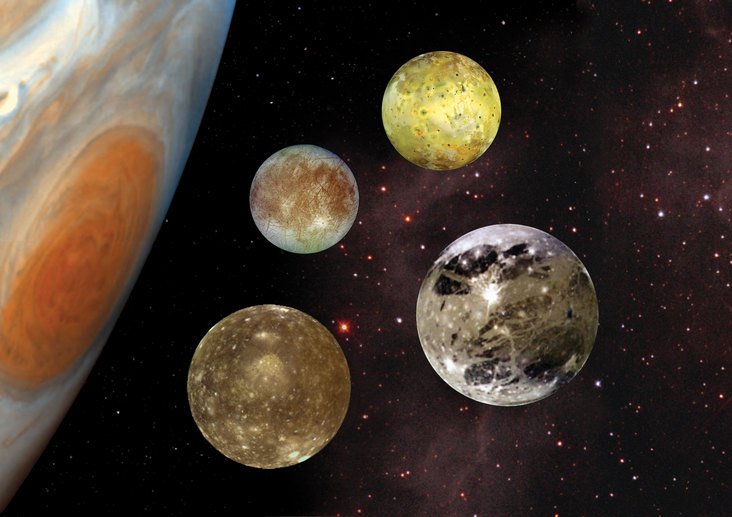
Two cameras in the visible range, three spectrographs operating in the visible, ultraviolet and microwave spectrum, a laser altimeter, a radar and a gravitational anomaly detector are located on board the device. All this will allow it to explore the surface of icy satellites and what lies beneath it. The most promising object of his research is Europa.
What is Europa like?
Europa is the second closest to Jupiter and the smallest of the four large moons of the giant planet. Its diameter is 3121 km, that is, it is slightly smaller than the Earth’s Moon. The average distance of this celestial body from the gas giant is about twice the average radius of the lunar orbit.
Europa makes one rotation around the central planet in just over 85 hours. At the same time, its rotation around its own axis is synchronized with the orbital one. As a result, Jupiter is always visible from one hemisphere of the satellite, but never from the other. The sun in the sky of Europa appears small and dim, moving quite slowly. The day and night cycle there lasts the same 85 hours.
In addition, the rotation of Europa is in resonance with the other moons of Jupiter. Io completes its journey around Jupiter in exactly half the time, while Ganymede, on the contrary, rotates half as slowly.
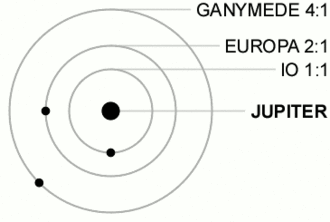
Due to the proximity of its neighbors, Europa is subject to significant tidal forces. They heat its core and force the uniform mixture of rock and water ice from which it was once formed to melt. Over billions of years, this process was completed. All the heavy stones ended up in the center of the satellite, and the ice remained on the outside. This is clearly visible from brightness and uniformity of its surface as seen from a distance. This makes it very different from other bodies that orbit Jupiter. In addition, Europa is the most spherical body in the Solar System: the maximum deviations of its figure from the sphere do not exceed 200 m.
The mystery of the ice crust to be revealed by JUICE
One of the secrets for JUICE to solve concerns the icy crust of Europa. The matter is that it is too white and clean. A celestial body devoid of atmosphere should be dotted with craters from meteorite impacts. But they are almost absent on this satellite of Jupiter.
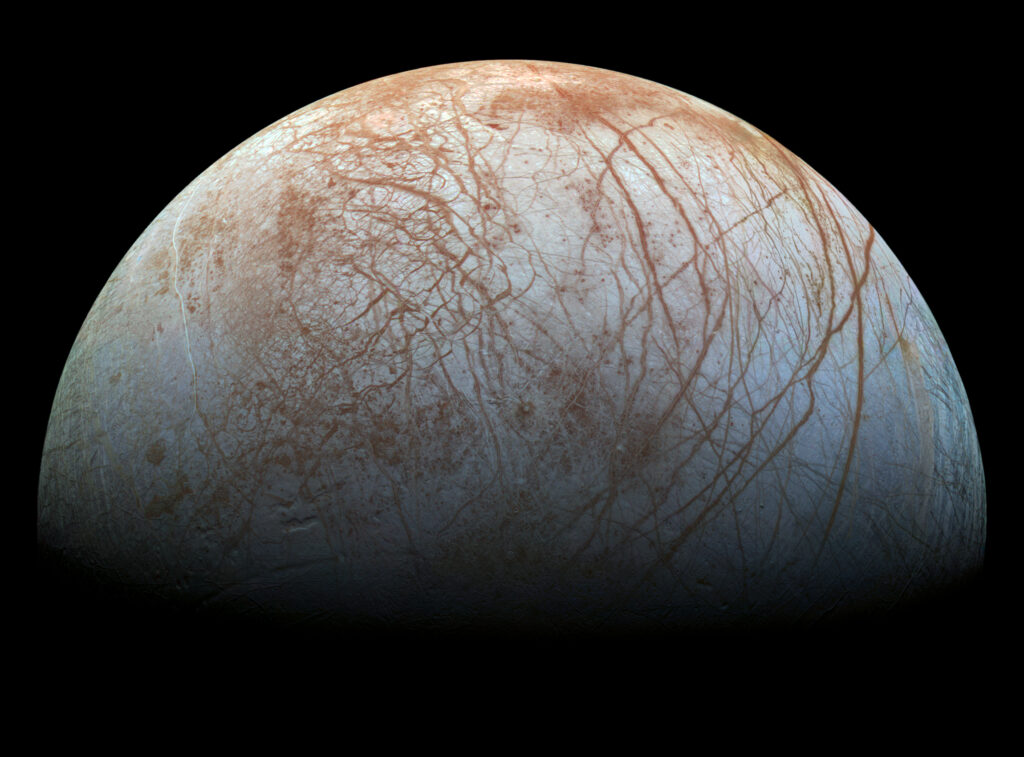
But there are numerous cracks that cover its surface, and lines that really look like “healed” cracks. All this suggests that liquid water constantly flows from inside and renews the surface layer. Science cannot yet answer the question of how quickly this happens — in hundreds, thousands or millions of years. This is what the European probe should investigate.
Only one thing can be said with certainty: the thickness of Europa’s ice shell is measured in kilometers and even tens of kilometers. But there are many assumptions about what can be underneath.
For example, “pockets” filled with liquid water are possible in this stratum. They are inside the Earth’s polar glaciers, where they are small enough, but literally teeming with microscopic life, because they are well saturated with oxygen. The same thing can be observed in Europe, only on a much larger scale.
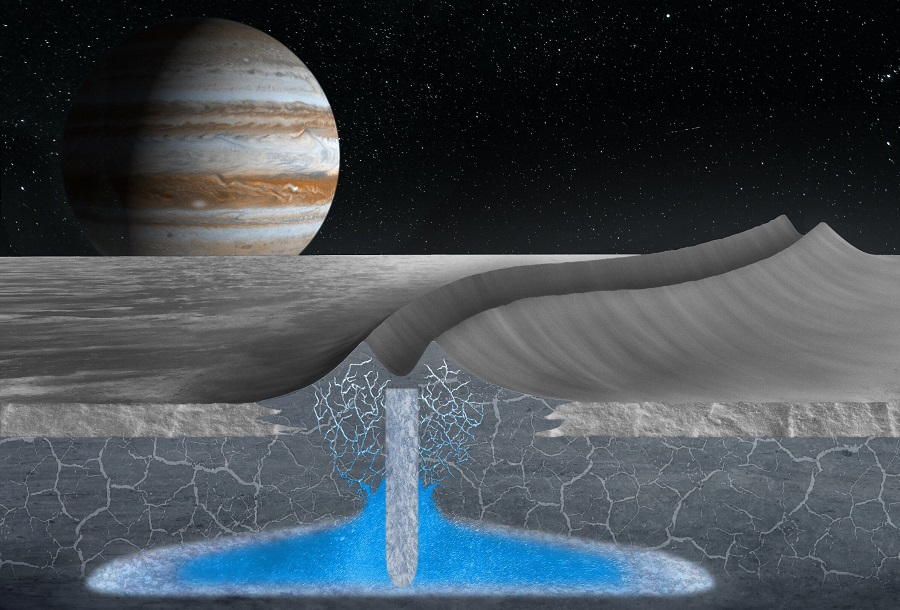
An ocean under the ice
The most interesting feature of Europa follows from the fact that its ice crust is constantly renewed. An ocean of liquid water must be hidden under the ice. Its existence has not been confirmed by direct observations, but few scientists doubt that it really exists.
It is still unknown at what depth the bottom of Europe’s ocean is. Most scientists are of the opinion that the water column is 100 km. This is nine times greater than the deepest point of the world’s oceans on Earth. It is completely dark, because the small distant sun cannot break through the ice crust which is 10–30 km deep.
However, oxygen can seep through it in some places. Such points are called chaoses. From the point of view of an outside observer — for example, the JUICE device — they resemble a large number of lines intersecting in the same place at different angles. Unsystematic accumulations of ice rocks are formed here.

However, scientists suspect that chaoses also have an internal structure. Their lower part can have the appearance of cracks and channels, through which water rises almost to the surface, which is saturated with oxygen in these places. JUICE will also be able to check this assumption.
Currents on Europa
The movement of the ice crust on Europa is closely related to the oceanic currents beneath. According to scientists, they are the driving force that determines which cracks open and which close.
In Earth’s oceans, currents are shaped by sunlight and shorelines. Warm water from the equatorial zones moves to the poles, bypassing the continents. Cold water moves in the opposite direction.

The oceans of Europa don’t have neither shores nor sunlight, so the primary source of currents are thermal springs at their bottom. Warm water from them first rises straight up, and then begins to deviate aside, forming global currents. Their existence is still debatable, but it is quite possible that the new probe will be able to tell something about them.
Life in the under-ice ocean
But JUICE will not be able to delve into the biggest mystery of the small icy satellite. The fact is that Europa is currently the best candidate for the existence of extraterrestrial life in the solar system.
On our planet, life mostly exists thanks to green plants that convert sunlight into chemical energy. However, at the bottom of the oceans, where there is no sunlight, the basis of the food chain is the process of bacteria extracting energy from thermal waters enriched with volcanic compounds.
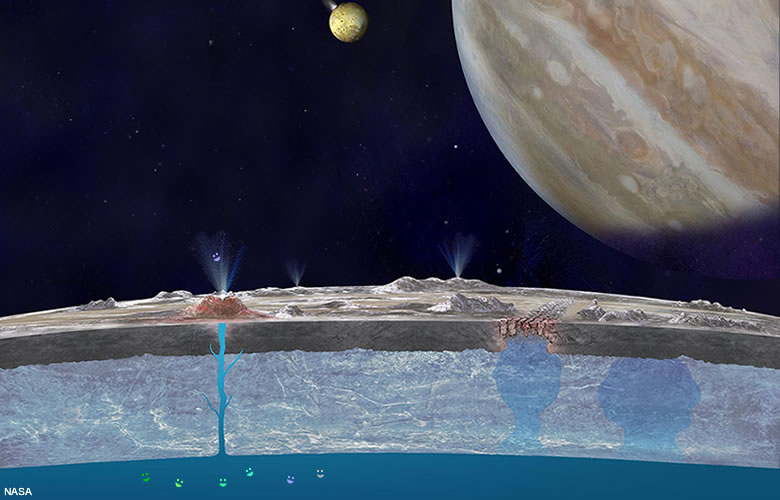
Living organisms can exist around underwater volcanoes. At the same time, they are able to do without light and even without oxygen. Everything we know about these organisms on Earth suggests that they could also exist in Europa’s ocean.
But we still don’t even know if any complex organics are present on this satellite, let alone unicellular or multicellular life. Perhaps the JUICE spectrographs will be able to find not only water, but also substances of biological origin in the emissions from the fissures. However, the task of exploring the amazing under-ice world of Europa will be assigned to the following missions.

